The Broke Backpacker is supported by you. Clicking through our links may earn us a small affiliate commission, and that's what allows us to keep producing free content 🙂 Learn more.
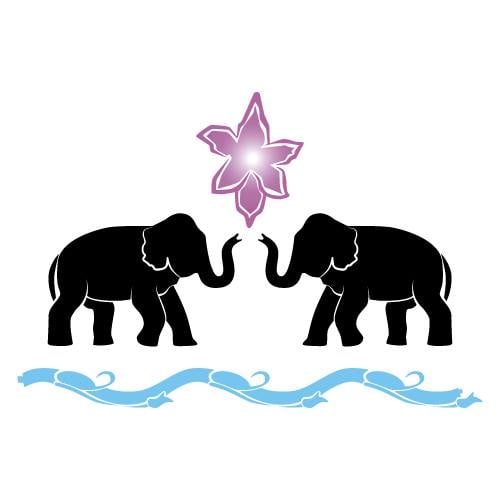
This guest post was authored by a veteran worker and environmentalist in Sri Lanka’s elephant tourism industry. Although the author has wished to remain anonymous, they have been instrumental in the incredible progress made for the welfare of domesticated elephants in Sri Lanka over the last 6 years.
The post has been given a little TBB snazz, but otherwise, the message remains the same: be good to the beasties.
No animal should ever be used for the luxury of humans. Not for transport, trophies, or symbols of status, and never for our entertainment. Yet throughout the elephant tourism industry, we see just that: the gross capitalisation and normalisation of elephant abuse.
Elephant tourism is a booming industry. It’s a match made in heaven—elephant plus tourist! Tourists love elephants. Hell, everyone loves elephants!
Which is why we need to take care of them, right? The truth about elephant riding, training, and other cruelties that we see in the elephant tourism industry is that it’s not harmless. The industry is damaging the welfare and wellbeing of elephants.
And it’s our job as travellers, the target market, and sexy humans with even sexier moral compasses to know our role in stopping elephant abuse. The truth is that a sadly underwhelming amount of people understand the level of cruelty present in the elephant tourism industry.
That’s why we need to discuss ethical elephant tourism It’s not all bad—you just need to know the score. What the ugly underbelly of elephant tourism looks like and just how to scrub it clean.
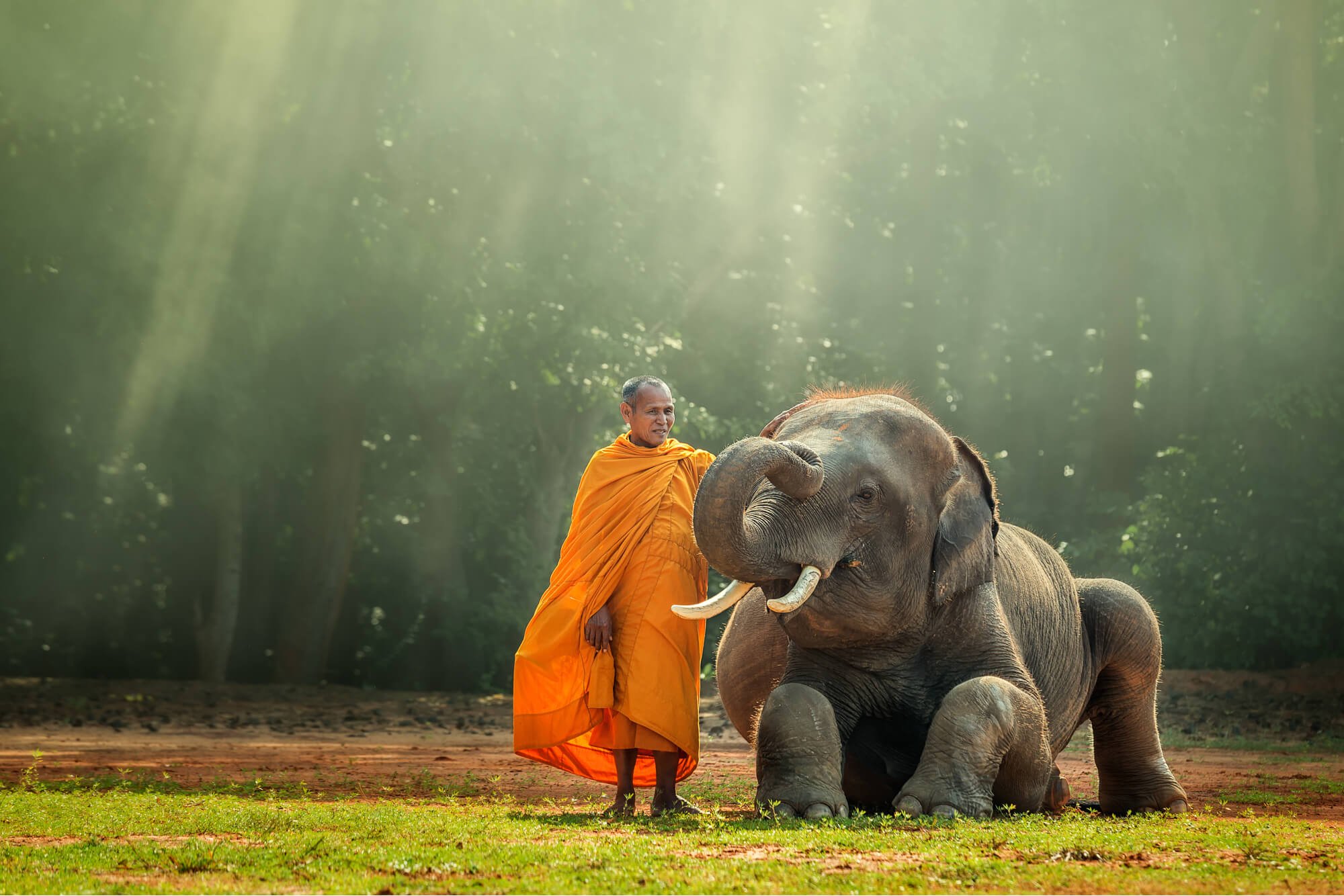
The Broke Backpacker is supported by you. Clicking through our links may earn us a small affiliate commission, and that's what allows us to keep producing free content 🙂 Learn more.
What’s the Deal With Elephant Tourism?
Look, the deal with elephant tourism is that it’s just the natural evolution of practices that have existed for a long, long time. Elephants have been domesticated in Asia since the 5th century. However, if we’re using ancient rock paintings in India as historical sources, it’s possible that people training and riding elephants has been in practice since roughly 6000 B.C.
In Sri Lankan history, ancient Sinhalese kings captured and tamed elephants. Kings were gifted elephants which they kept at their palaces as status symbols, used for both transport and also on the battlefield.
As time passed, their use as mountable tanks declined (namely due to the presence of real tanks), but their use as status symbols persisted. Domesticated elephants represented wealth and fortune with many still in captivity today across Asia even living in temples in solitude as a status symbol.
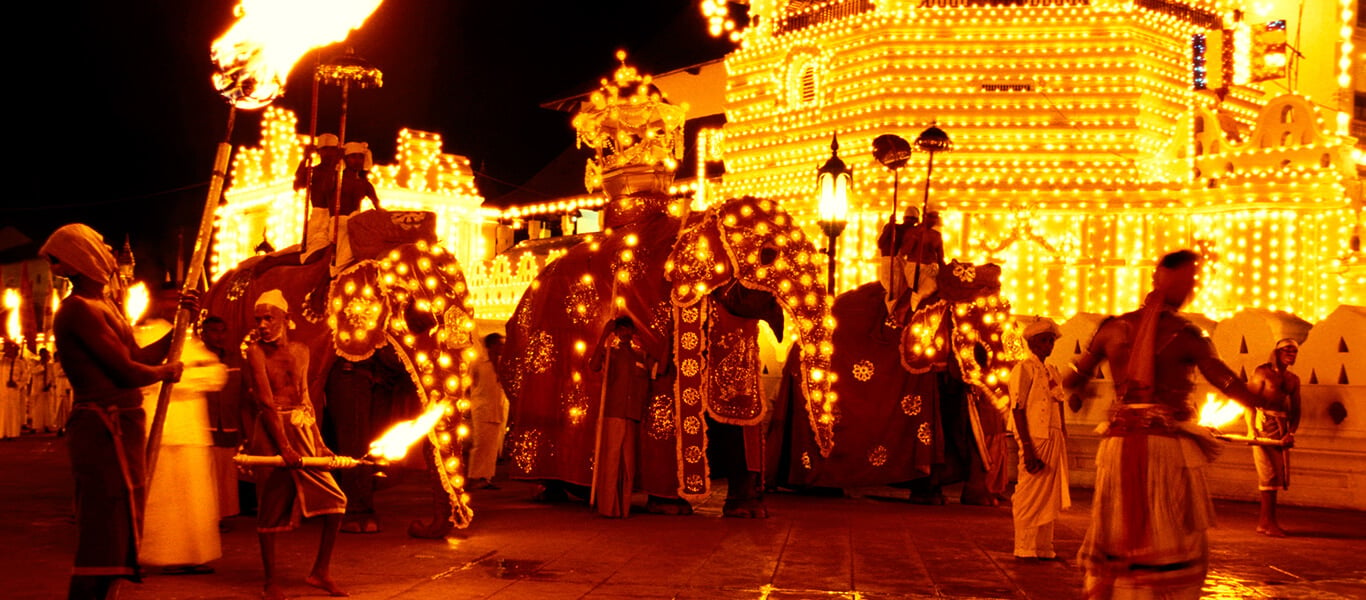
Photo: Ashan96 (WikiCommons)
In many places in Asia—including Sri Lanka—it was still both legal and culturally acceptable to take elephants from the wild late into the 20th-century. While usually domesticated as a symbol of wealth, the ironic truth is that elephant ownership is often too pricey to manage. Historically, captured elephants have found themselves working in logging or tourism industries to generate revenue
Being one of the world’s largest mammals and a truly magnificent creature, people from all over the world have a passion for elephants and inevitably gravitate to the elephant tourism industry to chase that passion. Many popular destinations in Asia generate massive revenue from elephant tourism yearly often particularly seeking to ride on elephants.
And therein lies the problem.
Is there ethical elephant tourism?
The issue is that you’re mixing some truly lethal components—lucrative tourism industries, uneducated tourists, and a false sense of cultural and historical entitlement to elephant domestication. And at the end of all that are some truly deplorable examples of elephant cruelty.
The most damaging thing you can do as a tourist engaging with elephants is to not do your research. It’s certainly possible to engage with elephants as a tourist while minimising your impact on their welfare. There are even elephant sanctuaries and orphanages doing tremendous work that really do deserve your attention, time, and money.
Which is exactly why you need to do your research. Putting in the time and effort to find these amazing places of animal TLC is ethical elephant tourism. You’re making a choice to not only respect these magnificent beasts but also to demonstrate to the industry that bad practices will not be tolerated or patronised.
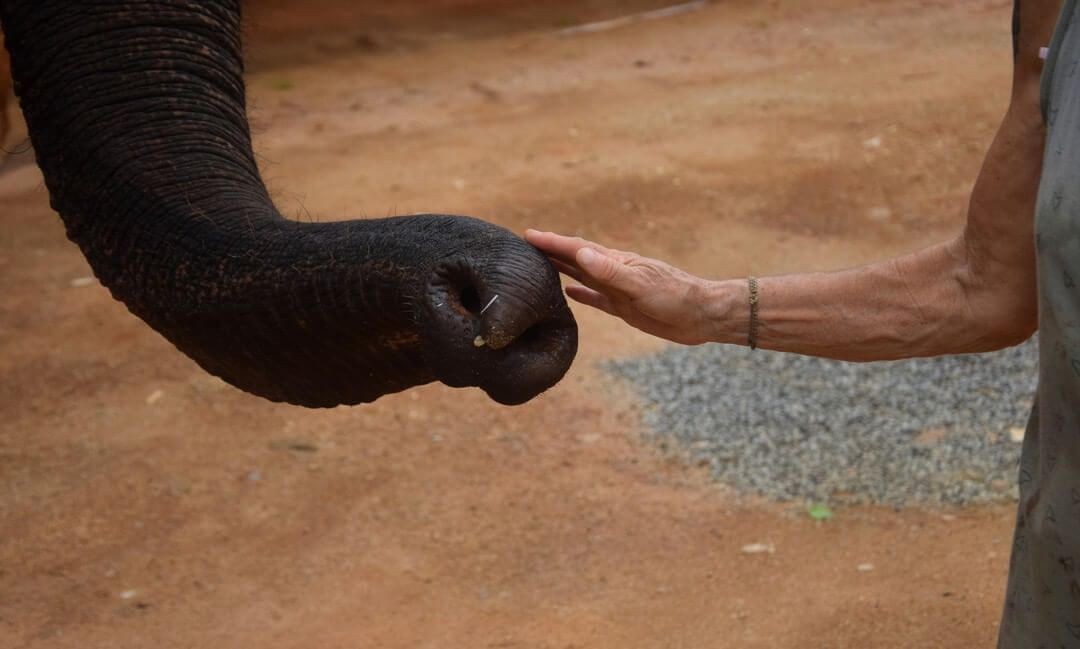
However, gleefully rushing headfirst into every glorified elephant farm that you find in your travels is not ethical. It’s not even intelligent. It’s a pure ‘dumb tourist’ move.
You’re making an active choice to disregard the welfare of both individual elephants and elephant populations as a whole. Which really begs the question… If you love elephants and want to experience them in your travels, why would you want to hurt them?
So before we get to HOW to be a responsible traveller, aware and making the right choices with elephants, let’s get one thing absolutely and indisputably clear…
The Truth About Elephant Riding
DO NOT RIDE AN ELEPHANT EVER.
Not now, not later, not in the year 2066 where cyber-elephants with hover capabilities have been created for touristic pleasure. Never.
Is it wrong to ride elephants? Yes.
Is it ever ok to ride on an elephant? No.
Is riding elephants bad for the spine? Yes. Well… their spine, yes. Yours should be fine (unless the elephant is riding you).
YOU SHOULD NEVER-EVER-EVER RIDE AN ELEPHANT WEARING A HOWDAH. That’s the big fancy metal and wood seat covered with cushions, colours, and cloth for large groups to sit on. While it may look lovely in photos, underneath the howdah is a heavily chained elephant so tightly constricted that their ribcage and spine are crushed and gaping sores and abscesses form.
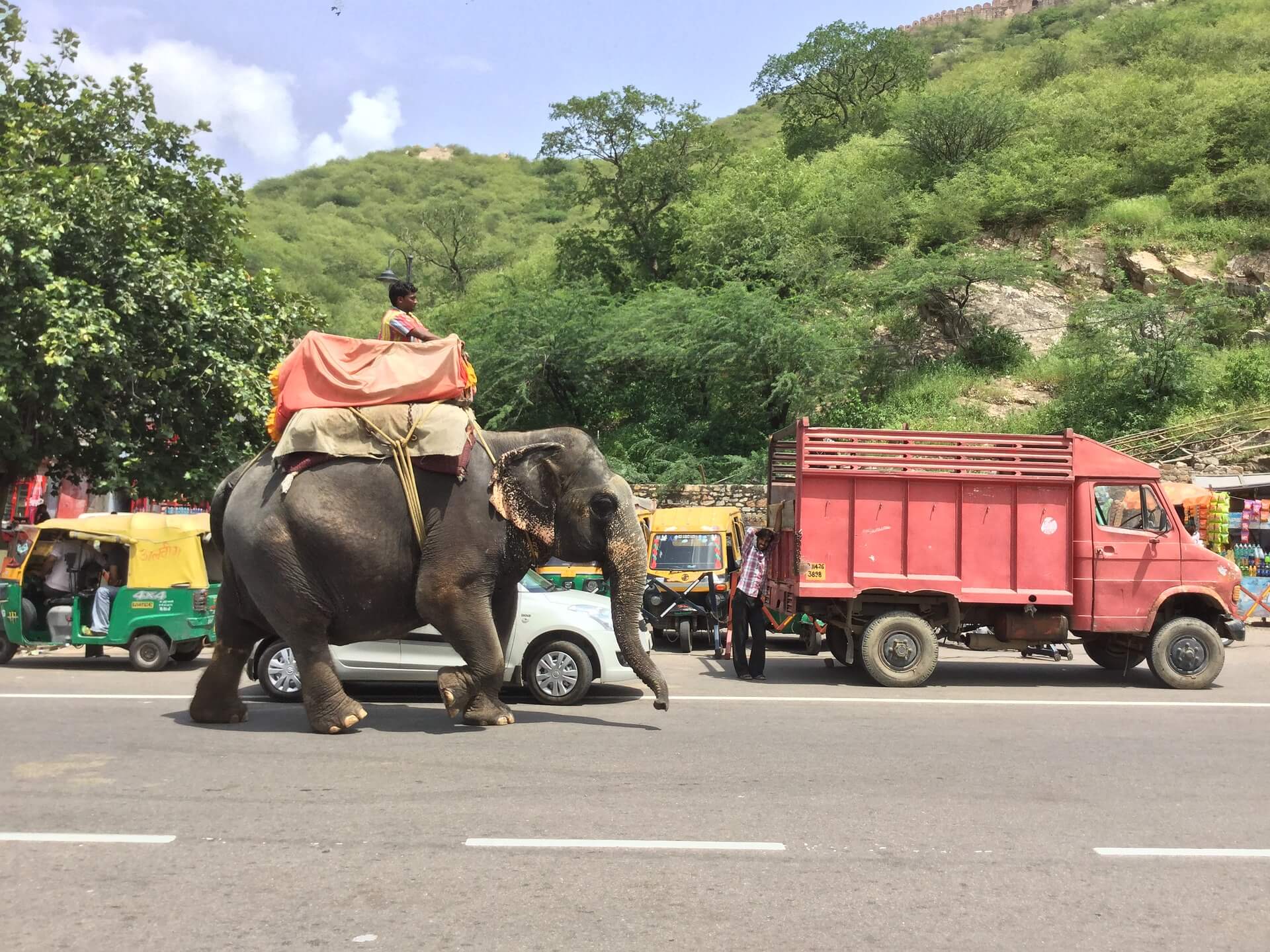
Some people might tell you that it’s ok to ride an elephant bareback. Those people are wrong.
Although not nearly as catastrophic as a howdah, it’s still bad for the elephant’s health. What’s more, is what’s happening while you’re riding that elephant.
Whilst you’re enjoying the ride, this beautiful and intelligent creature has no quality of life at all. Repeatedly frog-marched on parade, every movement commanded, with no freedom whatsoever, the elephant is unable to do what it wants. Any wrong move on the elephant’s behalf and they are disciplined, instantly shouted down, and more often than not will receive a stab in the sensitive parts of their feet with the bullhook.
So, no, there is really no situation where it’s acceptable to ride on an elephant. It’s not natural, it’s not warranted, and, ultimately, there’s a question that not a lot of tourists ask about the elephants that serve as tourist attractions.
How are elephants trained?
Think of breaking a horse—the method used to train horses for riding and other activities—except so, so much worse. Much like a wild horse, an elephant is a wild animal. One that has no evolutionary sense of domestication or riding.
To be ridden, an elephant must be broken first.
This is achieved by a method known as ‘elephant crushing’. In Southeast Asia, this process is beyond inhumane. Generally, an elephant—most likely a baby—is locked in a tiny cage and tied by all fours so it’s unable to move.
Gradually, the cage is closed tighter and tighter while workers and villagers gather. They stab the elephant with bullhooks, scream abuse, throw stones, starve, and torture the elephant until it completely gives in and is willing to obey any commands given. Its wild spirit is crushed; its elephant nature is broken.
Once tamed the bullhook (or ankus as it’s known in Sri Lanka) becomes a constant reminder that the Elephant must obey the commands of the mahout (elephant handler). If you fall into the camp of people who believe that animals have feelings and consciousness, then it would be fair to assume that the elephant has gained some level of PTSD from the experience.
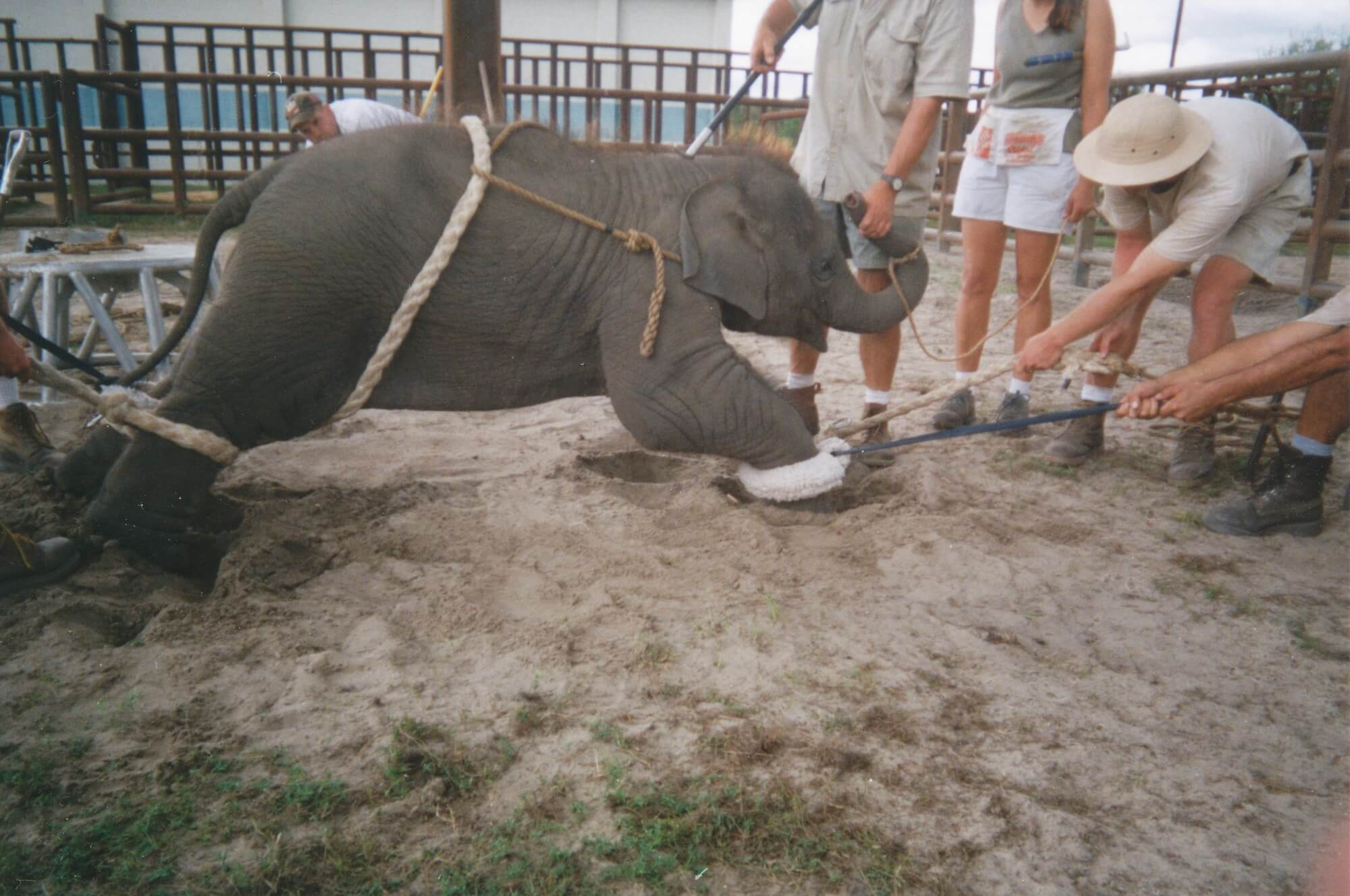
Photo: Sam Haddock (WikiCommons)
Many owners, mahouts, elephant safari managers, and other branches of the industry have now disavowed this process. Still, repeatedly we have seen instances of elephant crushing being used—even in secrecy.
And regardless, an elephant is not a horse. While horsing breaking and riding are already on a shaky moral footing, there are no gentle and ‘humane’ methods to train an elephant.
If an elephant is being ridden by tourists or doing tricks or painting portraits, ask yourself:
How was this elephant trained?
The Phajaan | Under the Crush
If you can do without the video evidence, I don’t blame you. In case you’d like to see, here’s a short video demonstrating how elephants are trained. This is a rough video to stomach: watch at your own peril.
Once you understand what’s happening behind the curatins, you start to examine institutions of elephant tourism very differently. Things aren’t always as innocent as they appear.
The Better Alternatives of the Elephant Tourism Industry
Now that we’ve established that it’s most definitely wrong to ride an elephant, what are the alternatives for tourists who do want to make the right choices? Well, there are lots! However, it does depend on how hands-off you feel the animal tourism industry should be.
The most important thing to get right is choosing a reputable organisation! Nine times out of ten, that’s going to be an elephant sanctuary.
What are elephant sanctuaries?
Elephant sanctuaries are home to elephants. Usually, they’re retired elephants who have reached the end of their careers in the logging and tourism industries. And, yes, that means they’ve been subjected to years of elephant abuse.
They’re given a home, food, veterinary care, and just a general better quality-of-life. That’s the purported mission of most elephant sanctuaries in the world.
Elephant sanctuaries do give tourists a method with which to interact with elephants, however, no sanctuary worth their salt is going to do this unethically. Elephant riding, performing elephants, or demonstrations of an elephant working is not something you’ll find at an elephant sanctuary. If you do see any of that, then it’s not a true sanctuary and you should turn the other way.
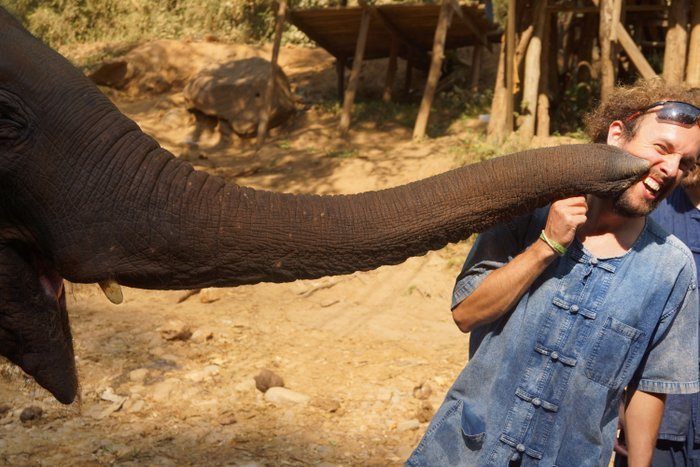
Photo: Sasha Savinov
And how do you find a good elephant sanctuary? Simple—you google it! Between Trip Advisor and Google reviews, their socials, backpacking blogs, and responsible travel resources, you should be able to scrounge up enough info to make an educated choice. If you can’t find the necessary details to establish them as a reputable organisation beyond a reasonable doubt, then just don’t go.
Because that’s the last detail to remember: there are countless phoney sanctuaries out there. There are heaps of places—little more than elephant camps wearing ethical sheeps’ clothing—who are putting their wealth before the health of their elephants. Tonnes of these places are pure tourist-scams sacrificing elephant welfare to make a quick buck.
Avoid these places at all costs. If it’s a choice between a cautious no and an unsure yes, always take the former.
And as the alternative to elephant riding, keep an eye out for these more humane types of elephant tourism.
Elephant Bathing
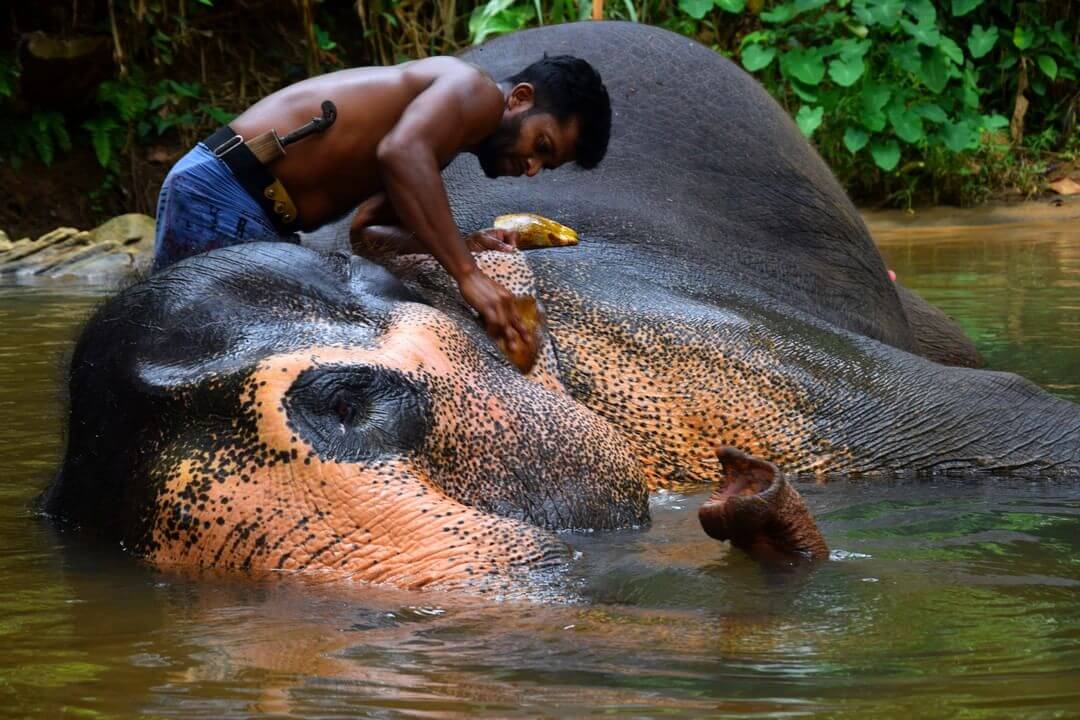
Just like washing your car, tenderly and affectionately, elephants are traditionally bathed by their mahouts. Is it necessary? No. Nor is it natural.
But the mentality is that much like an unwashed car or dog, an unclean elephant reflects a lack of care. The important question, however, is if it’s ethical.
It’s a grey area. Ultimately, frequent bathing and interaction with humans is unnatural. Elephants tend to bathe themselves at their own leisure; anything else is an entertainment factor and overwashing can be detrimental.
However, that doesn’t mean that the elephant doesn’t enjoy it. These are domesticated animals, accustomed to humans, and I’ve bathed enough elephants at this point in my life to know a happy elephant!
It’s a coconut husk as opposed to a wire brush, and the elephant gets to lie down in the river and get pampered like it’s a spa day! Wouldn’t you enjoy a regular swim with complimentary back-scrub?
How you feel about tourists bathing elephants is up to you. It’s worth noting that there are many elephant sanctuaries that DON’T provide this service to tourists in the feeling that it is unethical. There are also elephant sanctuaries that will chain the elephants up beneath the water for bath time: that is unethical.
Elephant bathing is one activity to consider. The presence of the activity doesn’t necessarily mark an abusive elephant sanctuary, however, it should be approached with caution.
Elephant Walks and Feeding
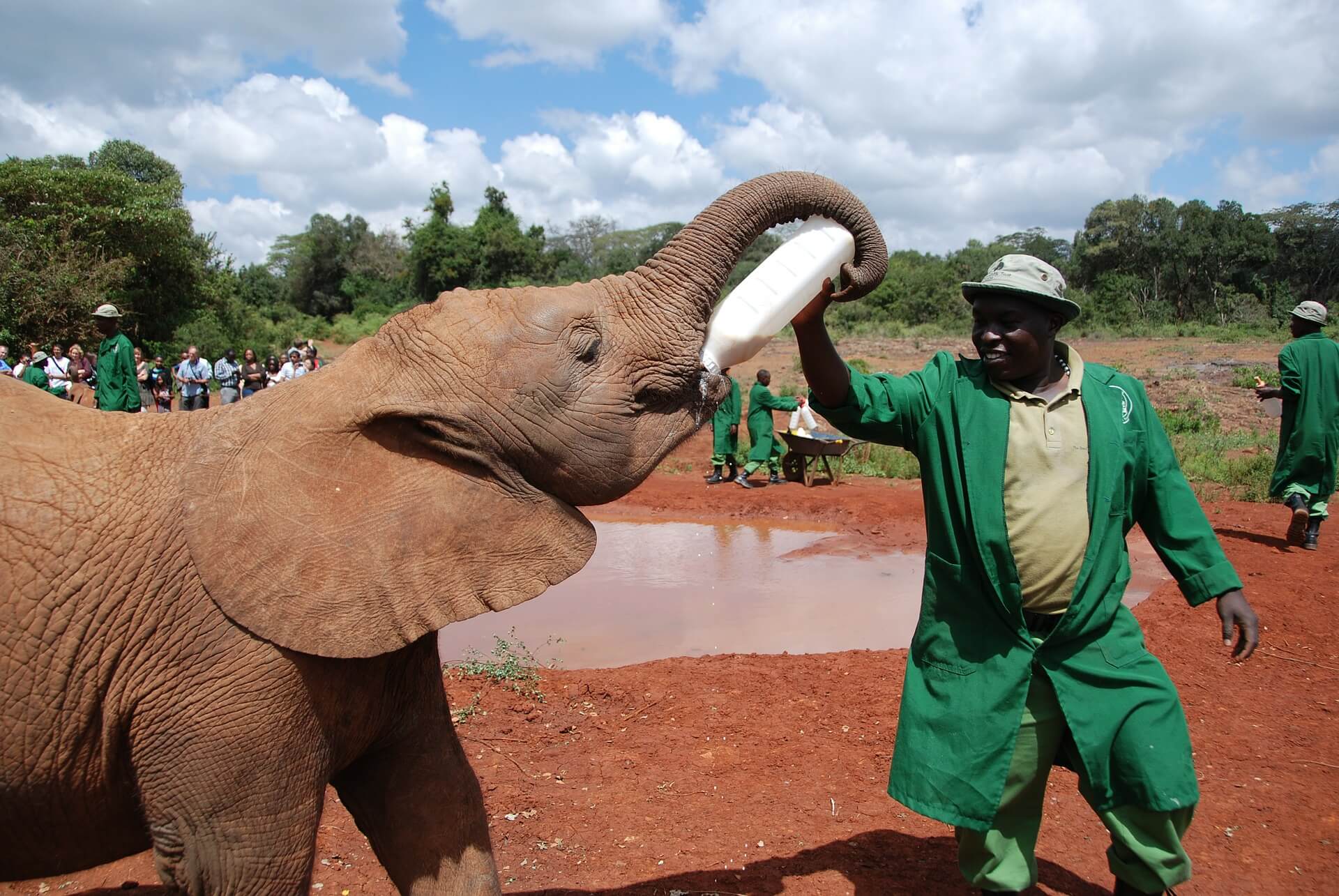
This is easily the best option by far for interacting with captive elephants. An Elephant Walking Experience is what Elephant Santuraries offer as a much more friendly alternative to people riding elephants.
Most elephant sanctuaries in Thailand, Sri Lanka, and across Asia will offer a chance to walk with the elephants and partake in feeding them as the primary means of tourist interaction. Any sanctuary that isn’t and is pushing other experiences over elephant walks likely shouldn’t be supported.
Hot tip! Did you know that the average elephant is able to walk up to nearly 200 kilometres in a day? Walking is a huge part (and very much a necessity) of their daily routine.
So, really, tourists are just joining in on the fun! The elephant is accompanied by their mahout as they enjoy their leisurely stroll and will receive some commands to avoid a renegade AWOL elephant situation. However, the elephants are much able to do them, grazing, stopping, reaching, sniffing, and exploring their natural environment.
Meanwhile, while the tourists are enjoying seeing the elephants exhibit natural behaviour (as opposed to riding them like a theme park attraction), they’ll receive aa up-close-and-personal experience feeding them fruits and learning all about the wonderful beasties.
It’s a much more natural experience for both the Elephant and the tourist. You still get AMAZING photos plus a much longer period of time with the Elephant. Meanwhile, the Elephant gets a change of scenery, free time to behave like an elephant, and enjoy the nature instead of rapidly being circled around the same route.
Volunteering With Elephants
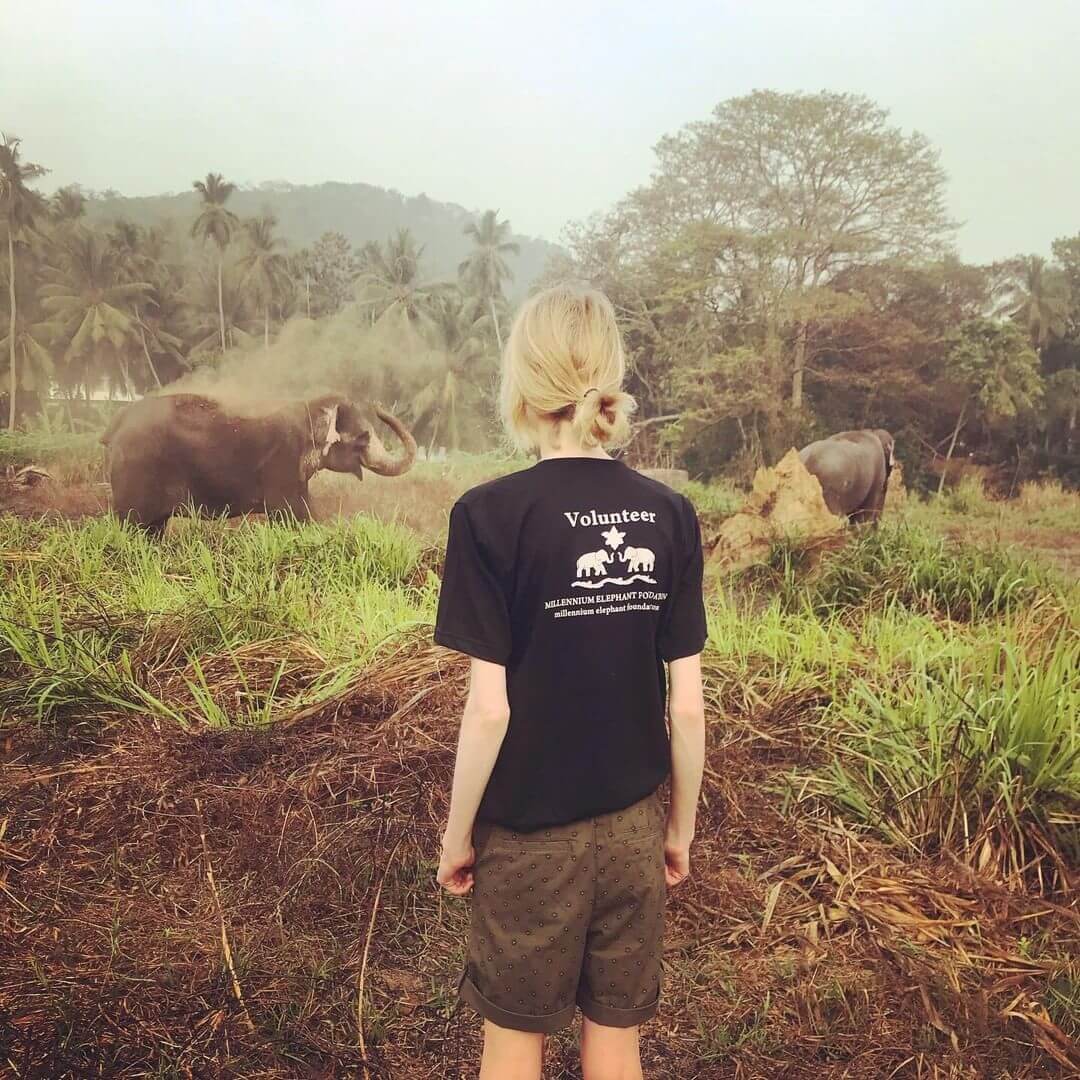
First and foremost, as with all things voluntourism, DO YOUR RESEARCH. The road to Hell is paved with good intentions, and often kind-hearted tourists can do just as much damage through volunteering as they can help. There are plenty of elephant orphanages scraping money from well-meaning tourists and using it to fund their centres of elephant cruelty.
However, travellers that do take the time to do their research and find ethical elephant sanctuaries will find work that is both dirty and laborious, but also very, very rewarding. Foreign influences can have a very positive input on the welfare of captive elephants. In fact, much of the scrutiny placed on elephant tourism and domestication in recent years is due to the influence of foreign tourism and volunteers.
For example, over the last 10 years, chains being used as a method of taming Elephants has been slowly removed from many establishments of elephant tourism in Thailand, Sri Lanka, and other parts of South and Southeast Asia. That’s an incredible benefit to the elephants in captivity and a huge and very positive change in the traditions of these cultures.
When volunteers are present (and, thus, bringing in revenue for sanctuaries), things like exercise, medication, and sanitary living conditions are closely monitored therefore bettering the overall welfare of the elephant’s life. The question is though, do volunteers have a positive impact on elephant tourism?
Personally, I would say yes. The income brought in by volunteers supports the costs to care for the elephants (including food and wages for the mahouts), and, of course, the level of care provided by a dedicated team of both mahouts and volunteers creates a wonderful environment for the elephants.
The number one thing to remember, however, is to research your ass off first!
Jeep Safaris
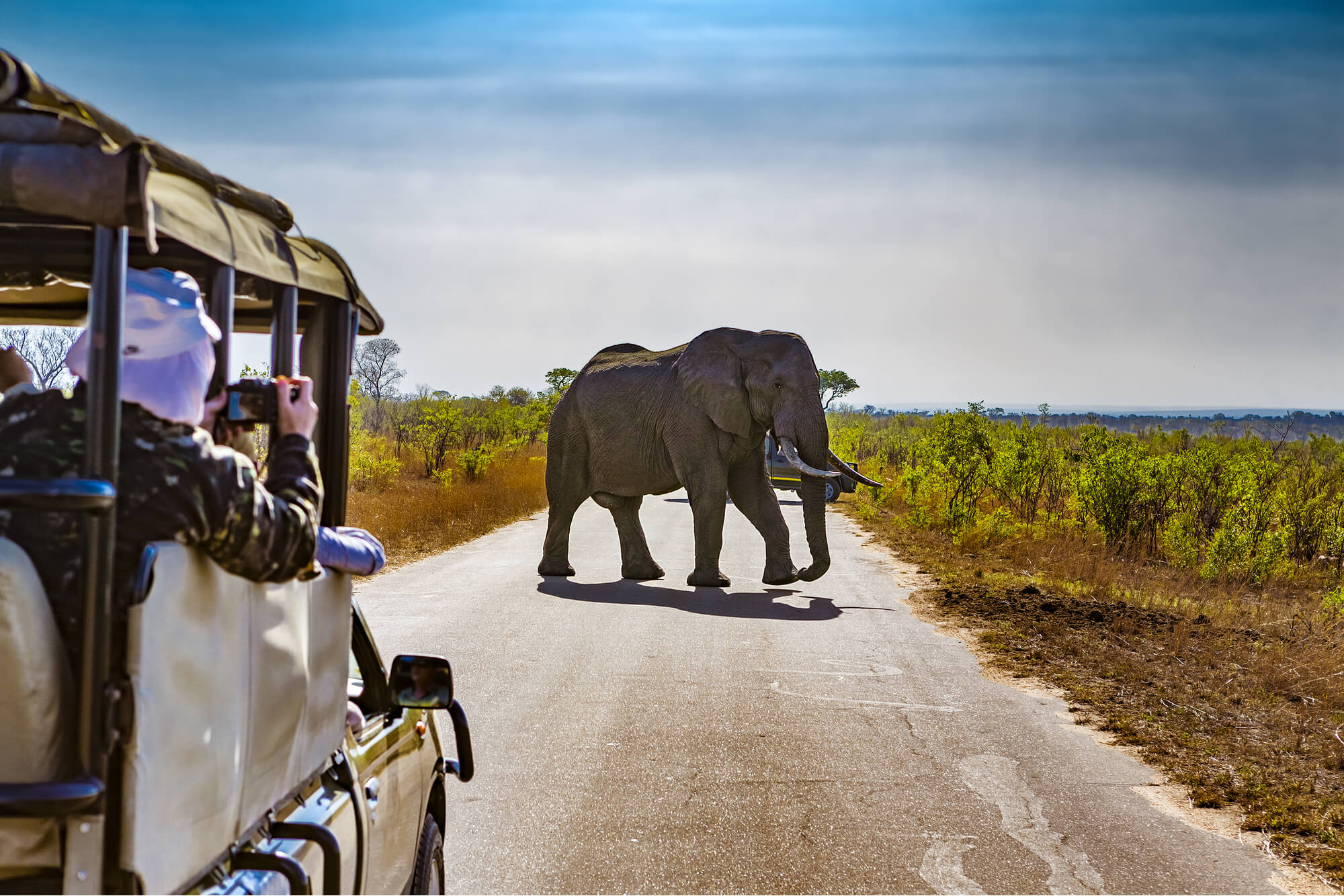
Personally, I don’t support jeep safaris. Safaris in Sri Lanka are plentiful, highly profitable, and many have a less-than-glowing reputation. They’re encroaching on natural habitats and doing a lot of damage in the process.
A lot of tourists book safaris as a means of seeing animals—including elephants—in the wild. I really implore travellers to avoid safaris, however, many take them all the same. Here’s what you need to keep in mind in case you do:
- Fill up your jeep – Do not book a jeep with only two people; we are already overcrowding the National Parks and adding unnecessary stress to the elephants’ home as it is.
- Do not litter – Anywhere, ever, at all, end of story. Leave no trace.
- Take the less-visited tracks – Not only will you have a better chance of seeing animals, but you’ll also experience fewer crowds and put less stress on the wildlife through the excess of safari-traffic.
- Avoid peak times – Again, be conscious regarding overcrowding and becoming a disturbance to the wildlife.
- CONTROL YOUR DRIVER – This is the most important thing! DO NOT let him speed. DO NOT let him block elephant/animal walkways and surround families or get too close to wildlife.
A lot of drivers do this as they think it’s what tourists want and are shooting for a juicy tip at the end. However, it’s both scaring the wildlife and interrupting their natural migration routes, separating families wreaking havoc. Make it abundantly clear to your safari driver that the healthy tip only comes IF they behave ethically and follow the rules.
Ultimately, if you are going to book a safari, please respect these guidelines. National parks are the only protected homes these beautiful animals have left. Let’s be kind all do our part to take care of their homes.
Or better yet, just don’t go on a safari.

Drink water from ANYWHERE. The Grayl Geopress is the worlds leading filtered water bottle protecting you from all manner of waterborne nasties.
Single-use plastic bottles are a MASSIVE threat to marine life. Be a part of the solution and travel with a filter water bottle. Save money and the environment!
We’ve tested the Geopress rigorously from the icy heights of Pakistan to the tropical jungles of Bali, and can confirm: it’s the best water bottle you’ll ever buy!
View on REI Read the ReviewStop Animal Abuse and Cruelty to Elephants
Well, now you know how to do elephant tourism ethically! It is a very sticky topic, but I hoped I’ve un-muddied the waters for you even just slightly.
The most crucial thing backpackers, travellers, and tourists can do to help stop elephant abuse is to stop giving it a market opportunity. Doing our research and examining institutions of the elephant tourism industry before funding them as visitors or volunteers DOES make a difference. Just look at the slow yet wide-sweeping changes we’ve seen employed in the elephant tourism industry over the last two decades.
The next most crucial thing is to not make the mistake of applying a ‘shoot ‘em all and let God sort them out’ mentality. There are numerous ethical elephant sanctuaries and other welfare institutions that rely on tourism to fund the good work that they do. Ignoring these places as a blanket method of ethics would only hurt a lot of elephants already in captivity.
Which is the final takeaway—only visit sanctuaries and orphanages rehoming domesticated elephant retirees. Any establishment training elephants for tourism is intrinsically not ethical. Do your research, find the right places, and have an elephant of a time!
And if you only learnt one thing from this article, let it be this:
Do not ever ride a fucking elephant.
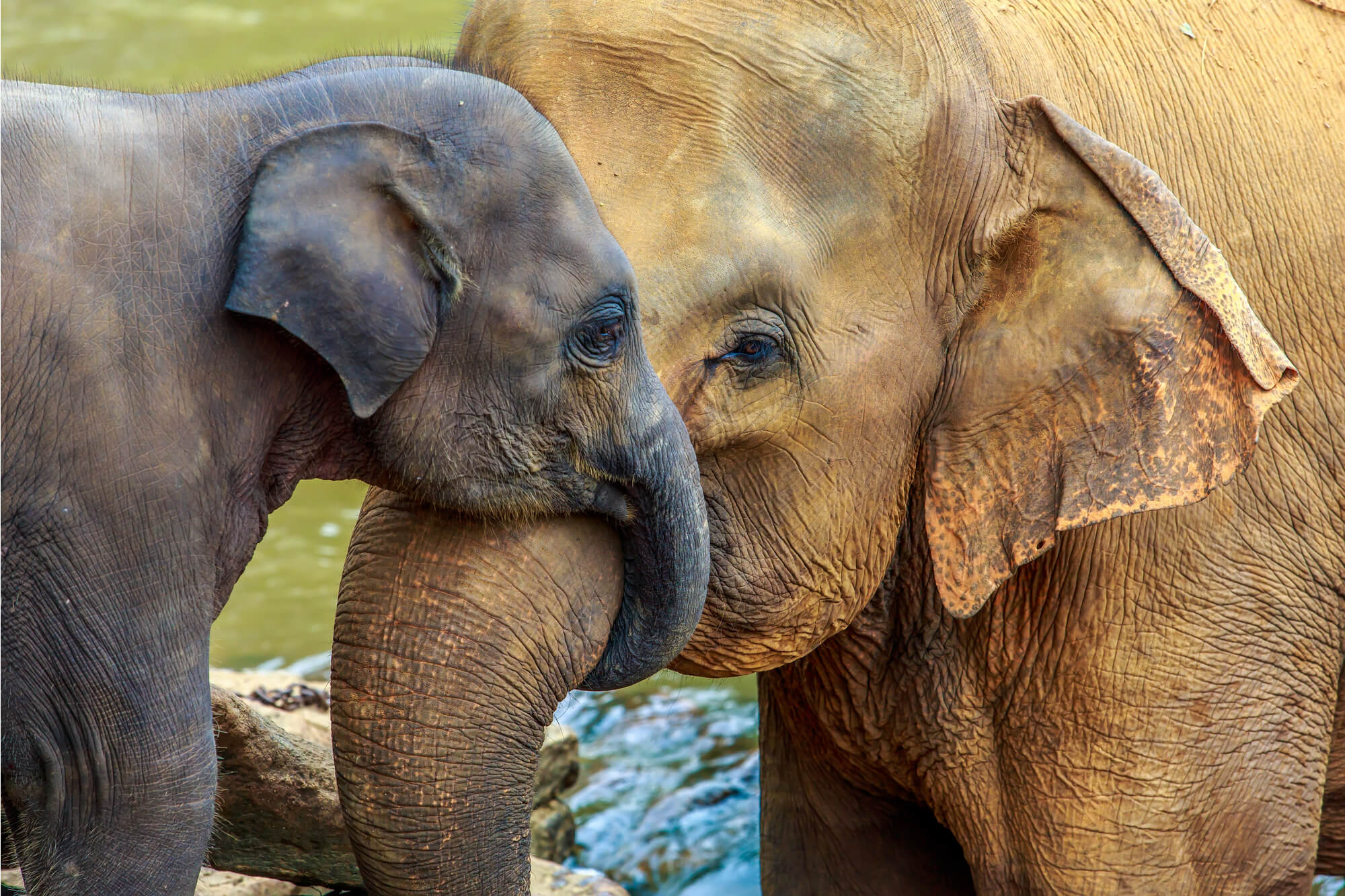
Buy Us a Coffee!
A couple of you lovely readers suggested we set up a tip jar for direct support as an alternative to booking through our links, since we’ve decided to keep the site ad-free. So here it is!
You can now buy The Broke Backpacker a coffee. If you like and use our content to plan your trips, it’s a much appreciated way to show appreciation 🙂








